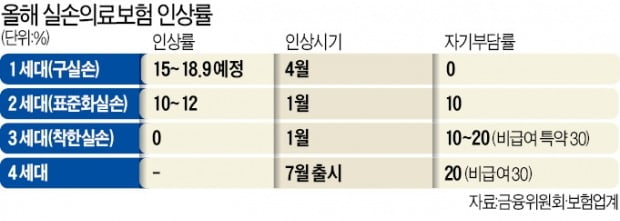From April, Samsung Fire & Marine Insurance will raise insurance premiums for subscribers of’old-type medical insurance (first-generation real-loss insurance)’ by 18.9%. This is the highest rate of increase in the non-life insurance industry. Other non-life insurers are also planning to raise their premiums in the mid-10% range. First-generation real-life insurance is a product sold until September 2009 and generally covers 100% of medical expenses.
Real-life insurance that the more you sell, the more you lose.

According to the financial sector on the 19th, Samsung Fire & Marine Insurance will raise the first-generation real-life insurance premium by 18.9%, the largest in the industry, through a corporate briefing (IR) in 2020 on the previous day. ) To normalize.” Samsung Fire & Marine Insurance fell 2.1% when the average increase rate of first-generation real-life insurance by large non-life insurers reached 9% in 2019, and rose by 2-3 percentage points last year. An official of the company explained, “As the first-generation real-life insurance is a structure that loses the more it is sold, it is inevitable to raise the premium.”
Not only Samsung Fire & Marine Insurance, but also other non-life insurers predicted that they would increase 15-17%. At the end of last year, non-life insurers suggested an increase in first-generation real-life insurance to the Financial Services Commission and accepted the opinion that it would be better to cut it by 20%. Initially, Samsung Fire & Marine Insurance was also planning to increase it by 24% this year, but lowered it to 18.9%. Real-life insurance is a’national insurance’ with 34 million individual subscribers, so the opinion of the financial authorities has a great influence on the increase rate.
The increase rate of standardized loss (2nd generation loss) increased in January this year was 10-12%. The second-generation loss is a product that the insured pays only 10% of the treatment cost (self-pay rate), and the rest is a product paid by the insurance company, and was sold from October 2009 to March 2017. Insurance premiums did not rise this year for the third-generation injured loss, which is called good loss or sincere loss. The self-pay rate is 10-20% of pay (applied by national health insurance) and 20-30% of non-payment.
2/3 of subscribers, 0 insurance claims
The Financial Services Commission allowed a double-digit increase rate because it saw the loss ratio of real-life insurance as serious. It is estimated that the loss ratio of the entire real-life insurance system last year exceeded 130%. It means that he received 1 million won as an insurance premium and paid over 1.3 million won as insurance. In 2019, the difference between paid premium and paid insurance amount reached 2.8 trillion won. This is the background that non-life insurers insist on raising their premiums to the level of the legal upper limit (25%).
Insurance subscribers are also dissatisfied. An official from the financial sector emphasized, “If the 10% increase rate continues for eight years, premiums will double than now.” “We understand the difficulties of insurance companies, but we must also try to reduce the burden on subscribers.” According to the Financial Services Commission, as of 2018, about 66% of all subscribers did not claim a single insurance claim. Some point out that it should not be overlooked that the net profit of the top five non-life insurers last year (2,248.6 billion won) increased 22.7% from the previous year as outdoor activities contracted in the aftermath of Corona 19.
The government announced that it would release the fourth-generation real loss insurance in July, saying that it would solve the structural problem of real loss insurance. If you haven’t paid insurance for unpaid treatment such as manual treatment, it is a product with a 5% discount on insurance premiums the following year. Instead, if the unpaid insurance premium exceeds 3 million won, the premium will quadruple. This insurance is based on the analysis that very few subscribers use medical services excessively. The self-pay rate for non-payments also increased to 30% regardless of whether or not a special contract was made.
An official in the insurance industry said, “If insurance premiums rise as it is now, it is worth considering the method of changing to a fourth generation loss in terms of the frequency of hospital use.”
Reporter Park Jong-seo [email protected]
Ⓒ Hankyung.com prohibits unauthorized reproduction and redistribution
